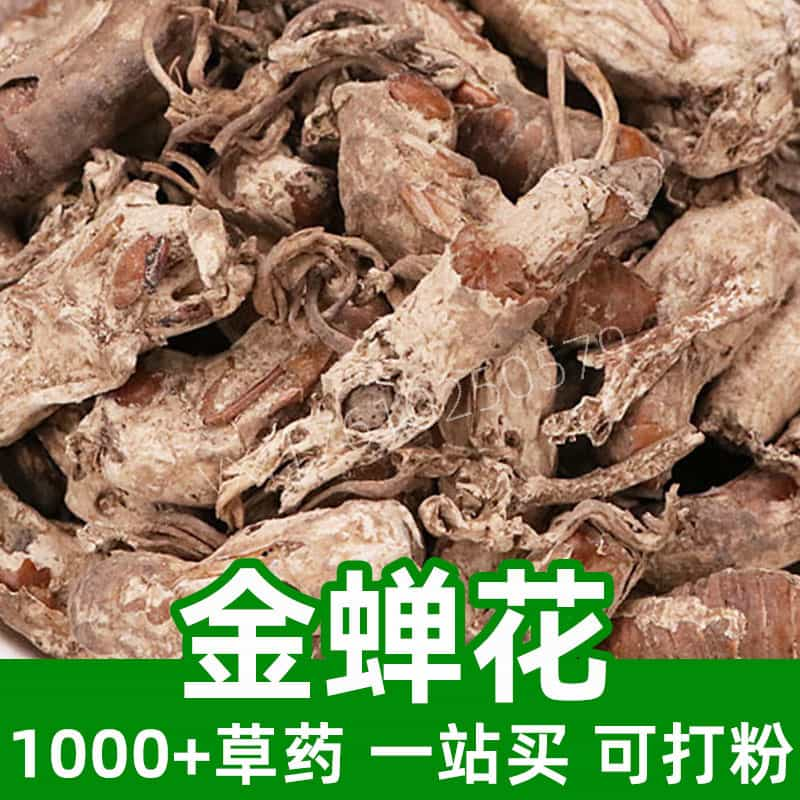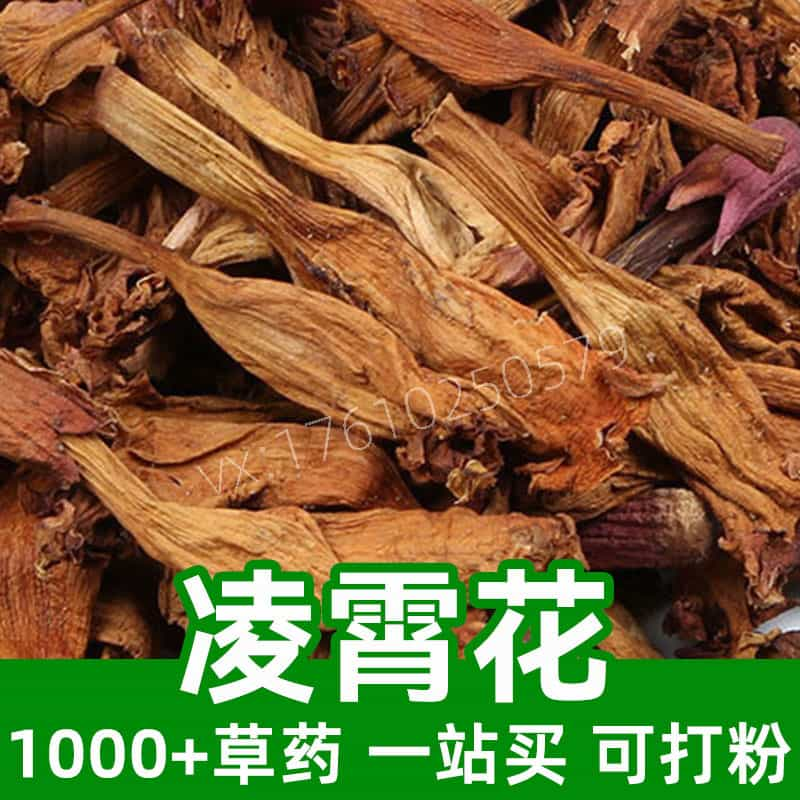Adenophora Root Product Introduction
Adenophora root, with the scientific name Adenophora tetraphylla, is a common Chinese medicinal material. Its main components include saponins, polysaccharides, proteins, amino acids, etc. The rhizome of Adenophora root is widely used in traditional Chinese medicine for its effects of moistening the lungs and relieving cough, clearing heat and detoxifying, benefiting qi and strengthening the spleen, and nourishing the kidneys and consolidating the foundation. It is commonly used in traditional Chinese medicine prescriptions to treat symptoms such as cough, asthma, fatigue, chronic diarrhea, and night sweats. It is mainly found in the northeastern, northern, and northwestern regions of China.
Main Effective Ingredients of Adenophora Root
Adenophora root is an important Chinese medicinal material, and its main effective ingredients include saponins, polysaccharides, proteins, amino acids, etc. These components endow Adenophora root with many medicinal effects.
- Saponins: Adenophora root contains a rich variety of saponin compounds, such as adenophoroside A, B, C, etc. Saponins have the effects of clearing heat and detoxifying, moistening the lungs and relieving cough, and enhancing immunity.
- Polysaccharides: The polysaccharides in Adenophora root have immune regulation, antioxidant, and anti-tumor effects, which can enhance the body's immune function and play an important role in improving human resistance.
- Proteins: Adenophora root is rich in protein, including various amino acids, which play an important role in human growth and development and cellular metabolism.
- Amino Acids: Adenophora root contains a variety of essential amino acids, such as lysine, phenylalanine, etc., which are crucial for human health and participate in protein synthesis, nerve conduction, and other physiological processes.
- Other Chemical Components: Adenophora root also contains a variety of trace elements and vitamins, such as iron, zinc, vitamin C, etc., which play an important role in maintaining normal human metabolism and physiological functions.
As a commonly used Chinese medicinal material, the effective components of Adenophora root have a wide range of applications in traditional Chinese medicine. It is often used to treat symptoms such as lung heat cough, lung dryness cough, asthma, night sweats, etc., with effects such as moistening the lungs and relieving cough, clearing heat and detoxifying, benefiting qi and nourishing yin. In addition, Adenophora root is also commonly used in the fields of food and health products to enhance immunity and improve physical constitution.
Application Scenarios and Usage of Adenophora Root
Adenophora root, as an important Chinese medicinal material, has a wide range of application scenarios and usage. Below, we will focus on its applications in traditional Chinese medicine and the food field, along with relevant usage information.
- Traditional Chinese Medicine Application Scenarios:
- Moistening the Lungs and Relieving Cough: Adenophora root has the effects of clearing heat and moistening the lungs, relieving cough and asthma, suitable for treating symptoms such as dry cough and scanty phlegm caused by lung heat and lung dryness.
- Benefiting Qi and Nourishing Yin: Adenophora root is sweet and cold in nature, with the effects of nourishing yin and clearing heat, promoting fluid production and moistening dryness, suitable for treating symptoms such as chronic cough, asthma, night sweats caused by insufficient lung yin and deficiency of both qi and yin.
- Clearing Heat and Detoxifying: Adenophora root can clear heat and detoxify, moisten the lungs and relieve cough, commonly used to treat symptoms such as sore throat, yellow phlegm, dry mouth, and thirst caused by lung heat.
- Benefiting Qi and Tonifying Deficiency: Adenophora root contains rich nutritional components, with the effects of benefiting qi and nourishing the lungs, nourishing yin and promoting fluid production, suitable for symptoms such as weakness, frail constitution, fatigue, etc.
- Usage:
- Decoction: Slice or grind an appropriate amount of Adenophora root, put it into a pot, add water to decoct, about 20-30 minutes, generally 15-30 grams each time, taken 2-3 times.
- Soup: Adenophora root can be used to make soup with other medicinal materials, such as Codonopsis root, Astragalus root, etc., which can enhance the effect of benefiting qi and nourishing yin.
- Soaking: Put a small amount of Adenophora root into a cup, add hot water to brew, which can be taken with other medicinal materials or honey, with the effects of moistening the lungs and relieving cough, clearing heat and detoxifying.
- Food Field Application:
- Tea Drink: Adenophora root tea is a common health tea drink, with the effects of nourishing yin and moistening the lungs, clearing heat and detoxifying, suitable for long-term drinking.
- Soup Product: Adenophora root is often used in soups or stews, which can increase the nutritional value and taste of the food.
- Cakes: Adenophora root can also be used as one of the raw materials for cakes, such as Adenophora root cake, Adenophora root cookie, etc., with the effects of benefiting qi and nourishing yin, moistening the lungs and relieving dryness.
- Precautions:
- Pregnant women and those with weak constitutions should use it under the guidance of a doctor.
- If allergic reactions or other adverse reactions occur during use, stop using it immediately and seek medical attention.
- Use strictly according to the advice of a doctor or pharmacist, not exceeding the recommended dosage.
As an important Chinese medicinal material, Adenophora root has a wide range of applications in traditional Chinese medicine and the food field, but attention should be paid to the dosage and method of use during use to avoid adverse reactions.
Introduction, Distribution, and Growth Environment of Adenophora Root Source Plant
Adenophora root, with the scientific name Adenophora stricta Miq., belongs to the genus Adenophora of the Campanulaceae family and is a common Chinese medicinal material with important medicinal value. Below, we will introduce the source plant, distribution, and growth environment of Adenophora root.
- Plant Introduction:
- Adenophora root is a perennial herbaceous plant with a thick rhizome and developed root system. The stem is upright, with a height of 50-100 centimeters, and the whole plant is hairless or slightly hairy.
- The leaves are long oval or lanceolate, opposite, with a short petiole at the base, and the edges are serrated.
- The flowering period is generally in summer, with a conical inflorescence, small and dense flowers, a bell-shaped corolla, white or light purple, and the flowering period lasts for several months.
- Distribution:
- Adenophora root is widely distributed in the northeastern, northern, eastern, and southwestern regions of China, commonly growing in mountainous areas, meadows, forest edges, and shady and humid places under forests.
- It is cultivated throughout China, especially with high production in Hebei, Shanxi, Shaanxi, Sichuan, Yunnan, and other places.
- Growth Environment:
- Adenophora root prefers to grow in a moist environment, usually growing at the foot of mountains, slopes, valleys, streams, etc., requiring loose, moist, well-drained acidic soil.
- The suitable growth temperature is between 15-25 degrees Celsius, with no high requirements for light, generally growing in a semi-shaded environment.
- Growth Habits:
- Adenophora root has strong adaptability and can grow under different habitat conditions, but acidic soil is preferred.
- Adequate water supply is required during the growth period, but it is not resistant to waterlogging. Excessive moisture can easily lead to root rot and affect growth and development.
- Reproduction Methods:
- The main reproduction methods of Adenophora root are seed propagation and division propagation.
- Seed propagation is mainly through natural dissemination or artificial sowing, while division propagation is carried out through the expansion of rhizome growth.
- Cultivation Management:
- During the cultivation process, regular soil loosening, fertilization, weeding, and maintaining soil moisture are required.
- Since the root system of Adenophora root is developed, care must be taken during harvesting to avoid damaging the root system.
As an important Chinese medicinal material, Adenophora root has a wide distribution and adaptability, but its growth environment requirements are high, requiring good management in acidic soil and suitable moistness.
Harvesting, Processing, and Storage of Adenophora Root
The harvesting, processing, and storage of Adenophora root are important links to ensure its medicinal value and quality. Below is relevant information about the harvesting, processing, and storage of Adenophora root.
- Harvesting Time:
- The harvesting time of Adenophora root is generally from spring to early autumn, with spring harvesting being preferred. At this time, the plant is growing vigorously, the roots are full, and the medicinal components are relatively high.
- Harvesting Method:
- During harvesting, clean up the soil around the roots first, then use tools such as shovels or spades to carefully dig up the Adenophora root rhizome.
- Pay attention to protecting the roots and try to avoid damage and breakage to ensure quality.
- Processing:
- After harvesting, Adenophora root needs to be cleaned and processed to remove soil, impurities, etc., then air-dried or dried in the shade until the surface of the rhizome is free of moisture, but not excessively exposed to sunlight to avoid damaging the medicinal properties.
- Drying or low-temperature drying methods can also be used to maintain the integrity of the medicinal components.
- Storage:
- Adenophora root should be stored in a cool and ventilated place, protected from direct sunlight and humid environments to prevent mold and insect damage.
- It can generally be placed in a dry and ventilated storage room, sealed with breathable bags or containers.
- To prevent moisture absorption, a small amount of desiccant, such as dried bamboo charcoal or silica gel, can be added to the container.
- Quality Assessment:
- During storage, regularly check the appearance and quality of Adenophora root for signs of insect damage, mold, etc.
- If problems are found, measures should be taken promptly to avoid affecting its medicinal value.
Through reasonable harvesting, processing, and storage, the medicinal components and quality of Adenophora root can be effectively protected, extending its shelf life and ensuring its good effects in traditional Chinese medicine applications.
Monica Sun is a seasoned expert in the natural raw materials industry, with over a decade of experience specializing in traditional Chinese medicinal herbs, spices, and fungi. She is skilled in the sourcing, processing, and application of these materials, emphasizing sustainability and innovation. Monica Sun has contributed to the development of high-quality natural raw materials that serve as essential components in functional foods, pharmaceuticals, and cosmetics, delivering tailored solutions to meet diverse market needs.

.jpg?orientation=landscape&width=800&height=800)

.jpg?orientation=landscape&width=800&height=800)











